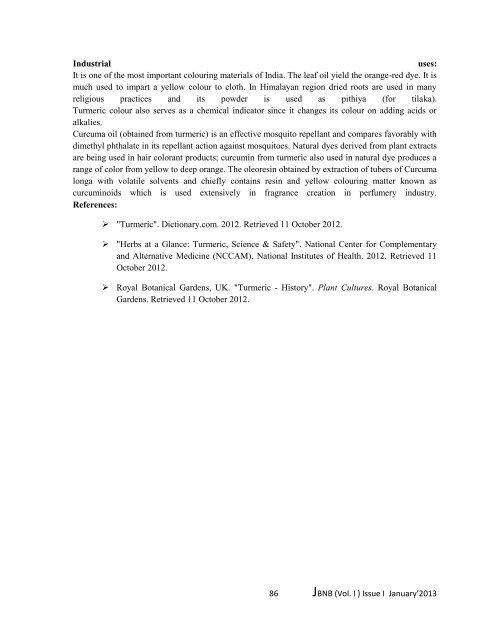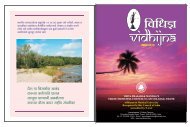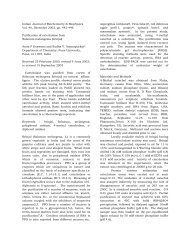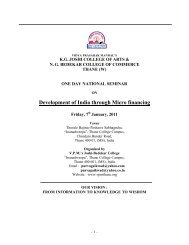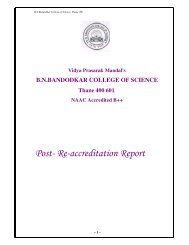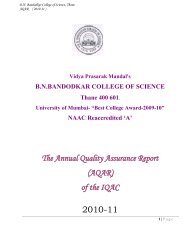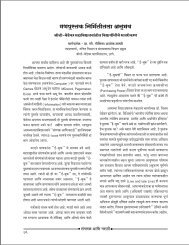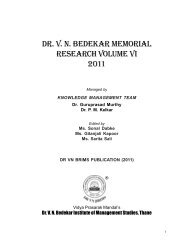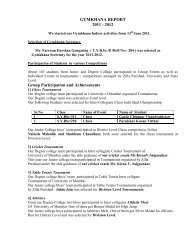J-BNB - VPMThane.org
J-BNB - VPMThane.org
J-BNB - VPMThane.org
Create successful ePaper yourself
Turn your PDF publications into a flip-book with our unique Google optimized e-Paper software.
Industrial<br />
uses:<br />
It is one of the most important colouring materials of India. The leaf oil yield the orange-red dye. It is<br />
much used to impart a yellow colour to cloth. In Himalayan region dried roots are used in many<br />
religious practices and its powder is used as pithiya (for tilaka).<br />
Turmeric colour also serves as a chemical indicator since it changes its colour on adding acids or<br />
alkalies.<br />
Curcuma oil (obtained from turmeric) is an effective mosquito repellant and compares favorably with<br />
dimethyl phthalate in its repellant action against mosquitoes. Natural dyes derived from plant extracts<br />
are being used in hair colorant products; curcumin from turmeric also used in natural dye produces a<br />
range of color from yellow to deep orange. The oleoresin obtained by extraction of tubers of Curcuma<br />
longa with volatile solvents and chiefly contains resin and yellow colouring matter known as<br />
curcuminoids which is used extensively in fragrance creation in perfumery industry.<br />
References:<br />
‣ "Turmeric". Dictionary.com. 2012. Retrieved 11 October 2012.<br />
‣ "Herbs at a Glance: Turmeric, Science & Safety". National Center for Complementary<br />
and Alternative Medicine (NCCAM), National Institutes of Health. 2012. Retrieved 11<br />
October 2012.<br />
‣ Royal Botanical Gardens, UK. "Turmeric - History". Plant Cultures. Royal Botanical<br />
Gardens. Retrieved 11 October 2012.<br />
86 J<strong>BNB</strong> (Vol. I ) Issue I January’2013


